Abstract
"Physical activity," "exercise," and "physical fitness" are terms that describe different concepts. However, they are often confused with one another, and the terms are sometimes used interchangeably. This paper proposes definitions to distinguish them. Physical activity is defined as any bodily movement produced by skeletal muscles that results in energy expenditure. The energy expenditure can be measured in kilocalories. Physical activity in daily life can be categorized into occupational, sports, conditioning, household, or other activities. Exercise is a subset of physical activity that is planned, structured, and repetitive and has as a final or an intermediate objective the improvement or maintenance of physical fitness. Physical fitness is a set of attributes that are either health- or skill-related. The degree to which people have these attributes can be measured with specific tests. These definitions are offered as an interpretational framework for comparing studies that relate physical activity, exercise, and physical fitness to health.
Full text
PDF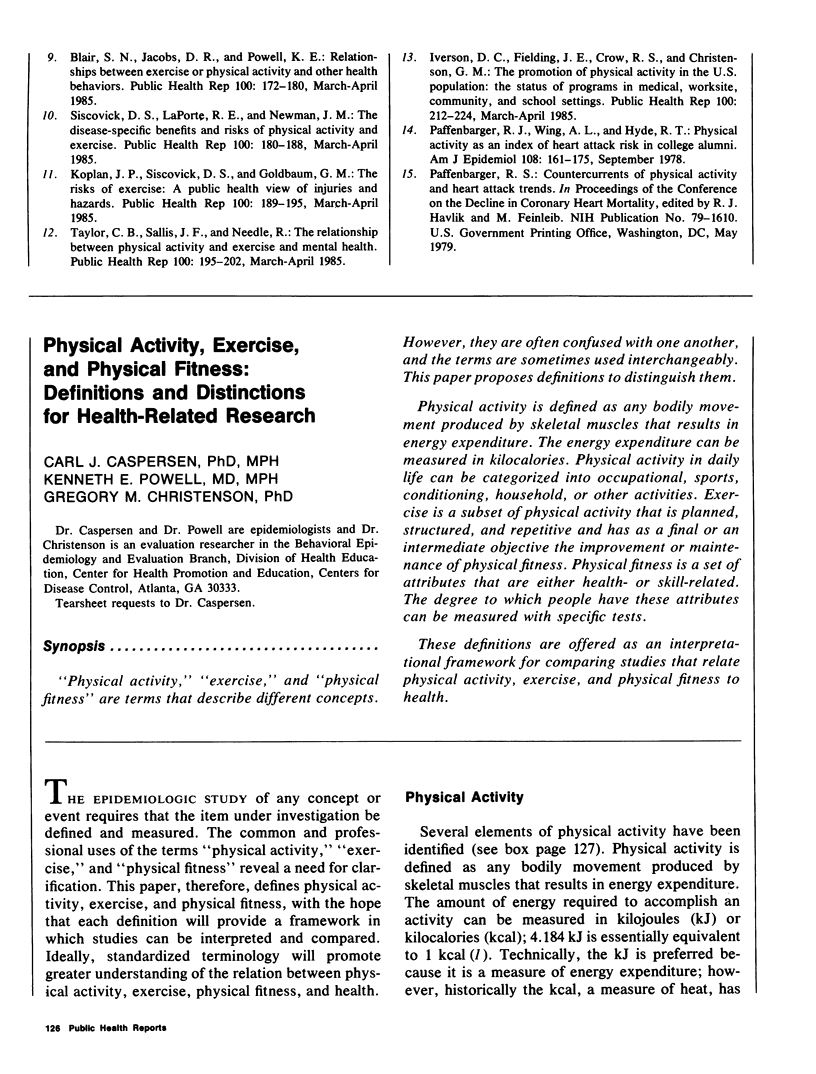
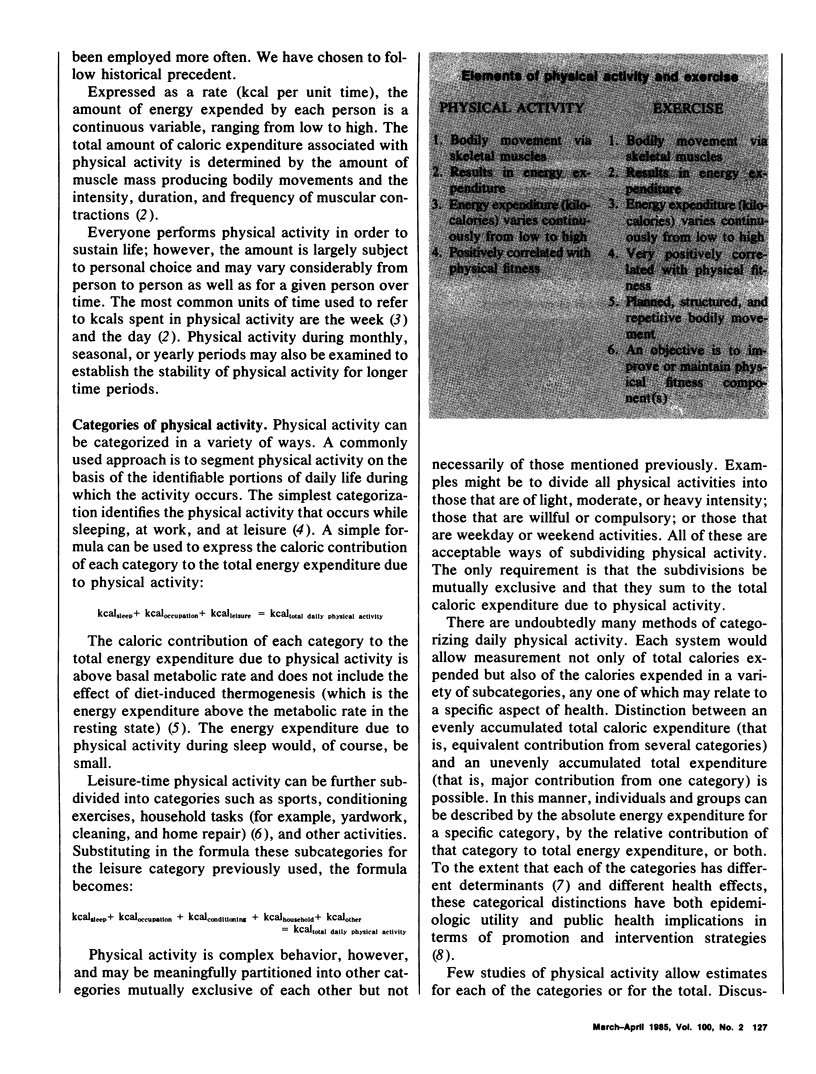
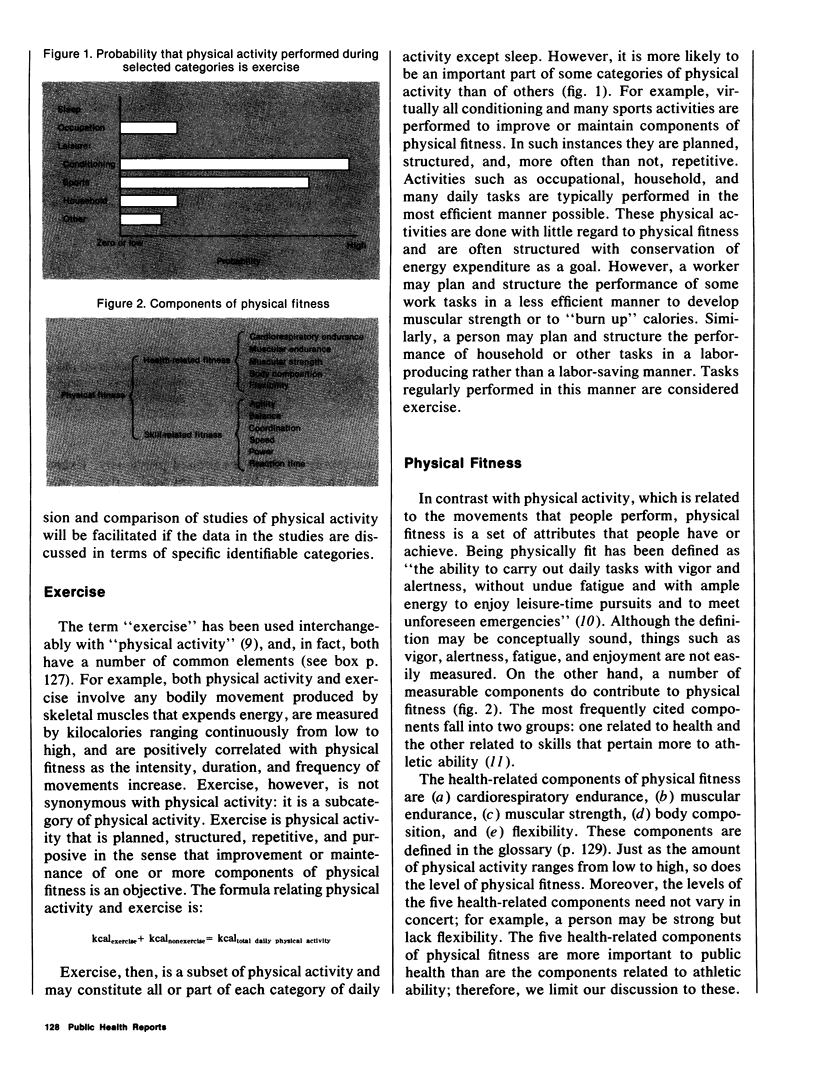
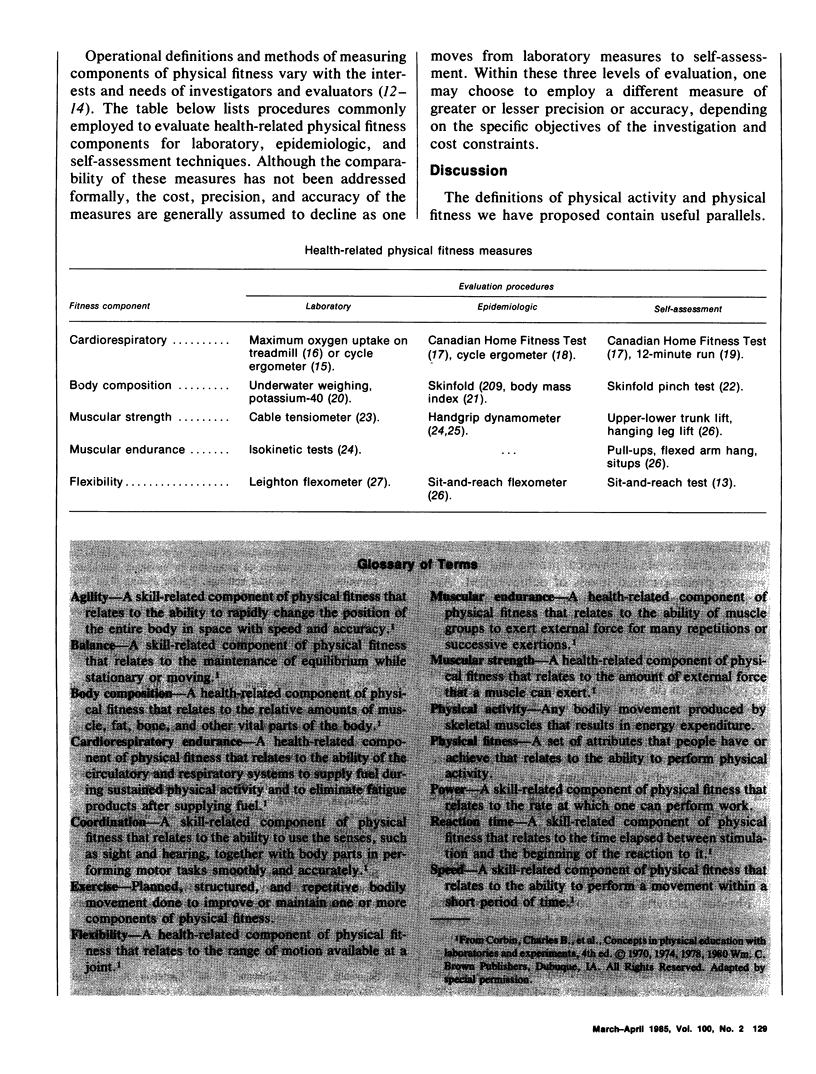
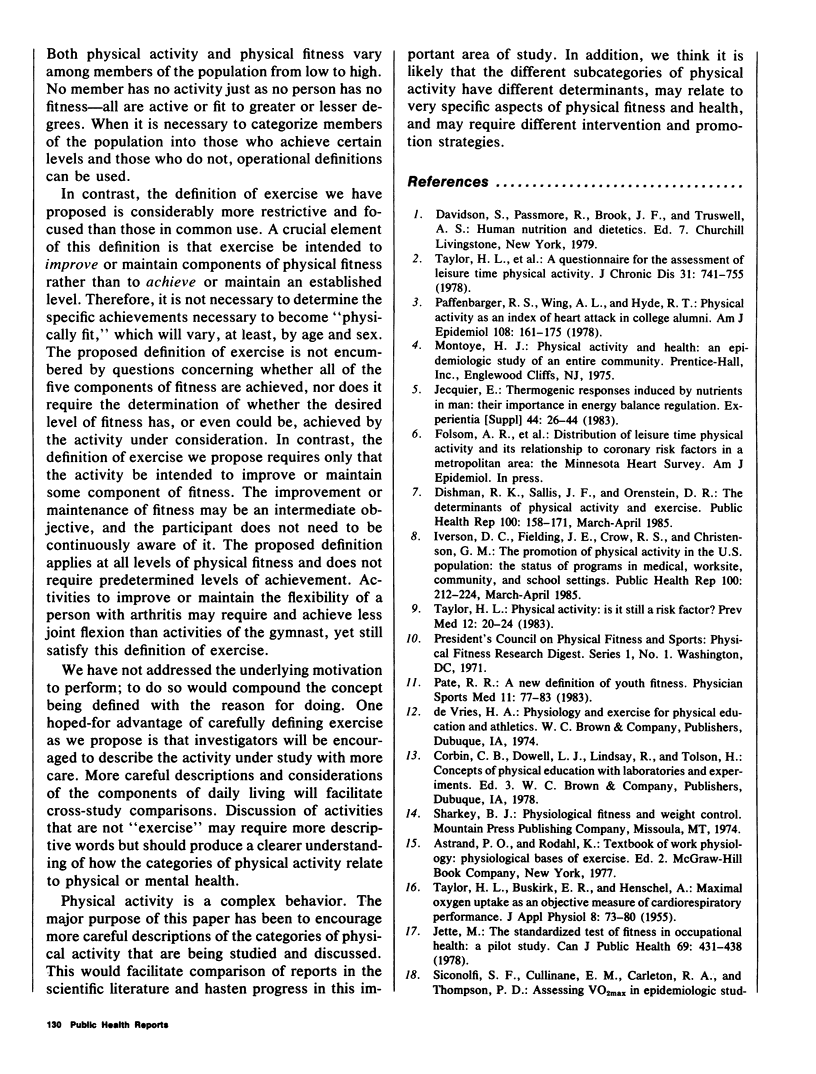
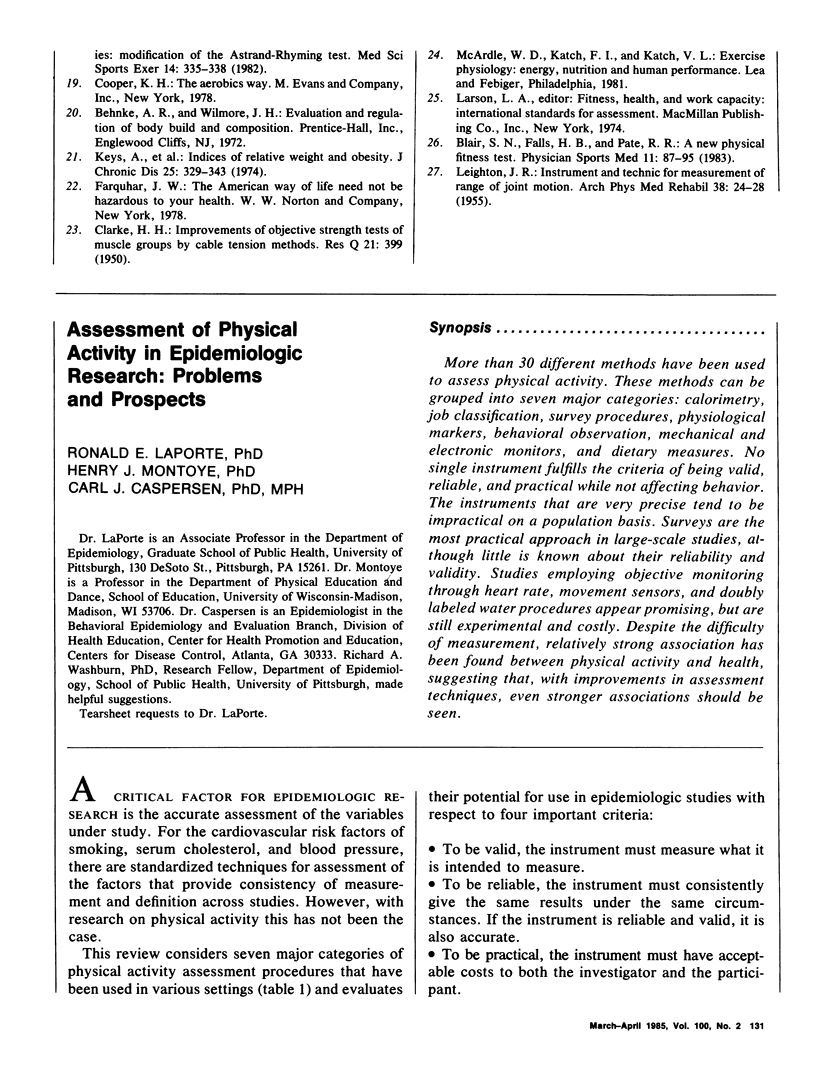
Selected References
These references are in PubMed. This may not be the complete list of references from this article.
- Dishman R. K., Sallis J. F., Orenstein D. R. The determinants of physical activity and exercise. Public Health Rep. 1985 Mar-Apr;100(2):158–171. [PMC free article] [PubMed] [Google Scholar]
- Iverson D. C., Fielding J. E., Crow R. S., Christenson G. M. The promotion of physical activity in the United States population: the status of programs in medical, worksite, community, and school settings. Public Health Rep. 1985 Mar-Apr;100(2):212–224. [PMC free article] [PubMed] [Google Scholar]
- Jetté M. The standardized test of fitness in occupational health: a pilot project. Can J Public Health. 1978 Nov-Dec;69(6):431–438. [PubMed] [Google Scholar]
- Keys A., Fidanza F., Karvonen M. J., Kimura N., Taylor H. L. Indices of relative weight and obesity. J Chronic Dis. 1972 Jul 1;25(6):329–343. doi: 10.1016/0021-9681(72)90027-6. [DOI] [PubMed] [Google Scholar]
- LEIGHTON J. R. Flexibility characteristics of four specialized skill groups of college athletes. Arch Phys Med Rehabil. 1957 Jan;38(1):24–28. [PubMed] [Google Scholar]
- Paffenbarger R. S., Jr, Wing A. L., Hyde R. T. Physical activity as an index of heart attack risk in college alumni. Am J Epidemiol. 1978 Sep;108(3):161–175. doi: 10.1093/oxfordjournals.aje.a112608. [DOI] [PubMed] [Google Scholar]
- Siconolfi S. F., Cullinane E. M., Carleton R. A., Thompson P. D. Assessing VO2max in epidemiologic studies: modification of the Astrand-Rhyming test. Med Sci Sports Exerc. 1982;14(5):335–338. [PubMed] [Google Scholar]
- TAYLOR H. L., BUSKIRK E., HENSCHEL A. Maximal oxygen intake as an objective measure of cardio-respiratory performance. J Appl Physiol. 1955 Jul;8(1):73–80. doi: 10.1152/jappl.1955.8.1.73. [DOI] [PubMed] [Google Scholar]
- Taylor H. L., Jacobs D. R., Jr, Schucker B., Knudsen J., Leon A. S., Debacker G. A questionnaire for the assessment of leisure time physical activities. J Chronic Dis. 1978;31(12):741–755. doi: 10.1016/0021-9681(78)90058-9. [DOI] [PubMed] [Google Scholar]
- Taylor H. L. Physical activity: is it still a risk factor? Prev Med. 1983 Jan;12(1):20–24. doi: 10.1016/0091-7435(83)90164-0. [DOI] [PubMed] [Google Scholar]


